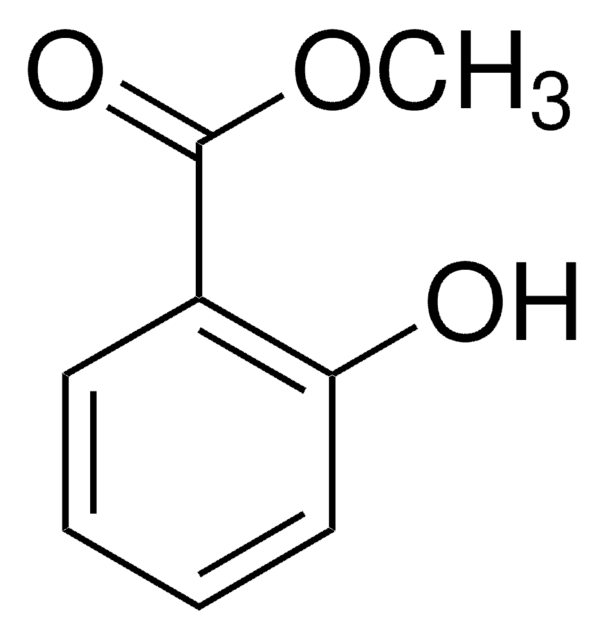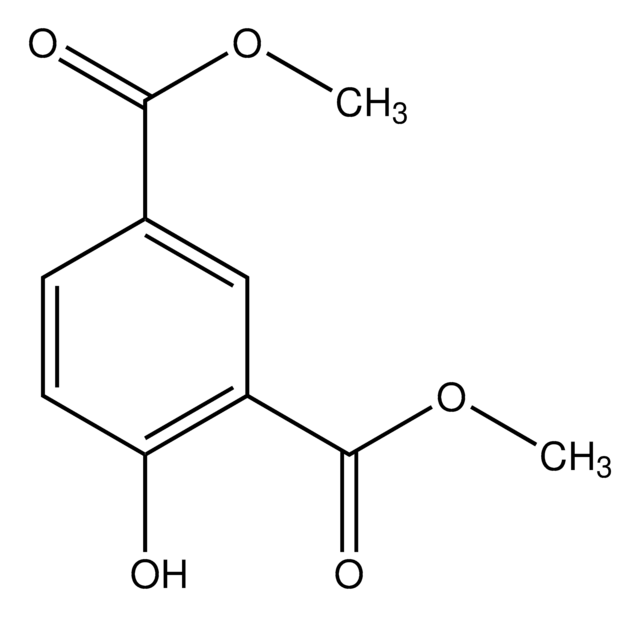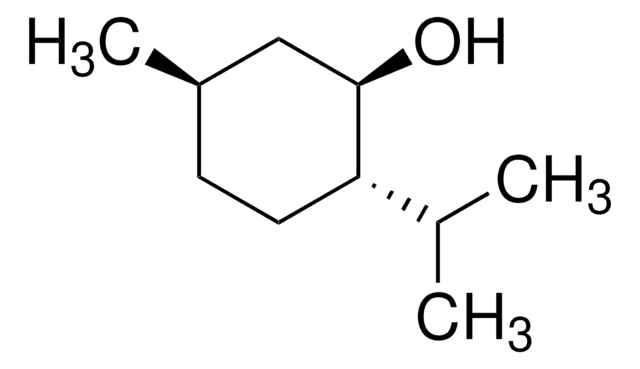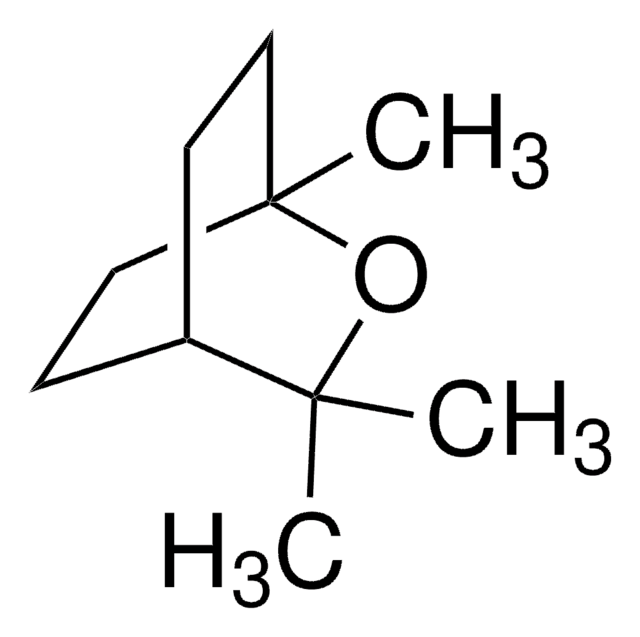Kluczowe dokumenty
1437450
USP
Methyl salicylate
United States Pharmacopeia (USP) Reference Standard
Synonim(y):
2-Hydroxybenzoic acid methyl ester, Methyl 2-hydroxybenzoate, Oil of wintergreen, Wintergreen oil
About This Item
Polecane produkty
klasa czystości
pharmaceutical primary standard
gęstość pary
5.26 (vs air)
ciśnienie pary
1 mmHg ( 54 °C)
rodzina API
methyl salicylate
temp. samozapłonu
847 °F
producent / nazwa handlowa
USP
współczynnik refrakcji
n20/D 1.536 (lit.)
bp
222 °C (lit.)
mp
−8-−7 °C (lit.)
gęstość
1.174 g/mL at 25 °C (lit.)
Zastosowanie
pharmaceutical (small molecule)
Format
neat
ciąg SMILES
COC(=O)c1ccccc1O
InChI
1S/C8H8O3/c1-11-8(10)6-4-2-3-5-7(6)9/h2-5,9H,1H3
Klucz InChI
OSWPMRLSEDHDFF-UHFFFAOYSA-N
Szukasz podobnych produktów? Odwiedź Przewodnik dotyczący porównywania produktów
Opis ogólny
Zastosowanie
Komentarz do analizy
Inne uwagi
produkt powiązany
Hasło ostrzegawcze
Danger
Zwroty wskazujące rodzaj zagrożenia
Zwroty wskazujące środki ostrożności
Klasyfikacja zagrożeń
Acute Tox. 4 Oral - Aquatic Chronic 3 - Eye Dam. 1 - Repr. 2 - Skin Sens. 1B
Kod klasy składowania
10 - Combustible liquids
Klasa zagrożenia wodnego (WGK)
WGK 2
Temperatura zapłonu (°F)
204.8 °F - closed cup
Temperatura zapłonu (°C)
96 °C - closed cup
Wybierz jedną z najnowszych wersji:
Certyfikaty analizy (CoA)
It looks like we've run into a problem, but you can still download Certificates of Analysis from our Dokumenty section.
Proszę o kontakt, jeśli potrzebna jest pomoc Obsługa Klienta
Masz już ten produkt?
Dokumenty związane z niedawno zakupionymi produktami zostały zamieszczone w Bibliotece dokumentów.
Klienci oglądali również te produkty
Nasz zespół naukowców ma doświadczenie we wszystkich obszarach badań, w tym w naukach przyrodniczych, materiałoznawstwie, syntezie chemicznej, chromatografii, analityce i wielu innych dziedzinach.
Skontaktuj się z zespołem ds. pomocy technicznej








